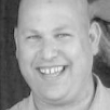
Head of Aerodynamics, Israel Aerospace Industries (IAI)
Mr Ohad Gur received is PhD in in Aerospace engineering in 2007 at Technion - Israel Institute of Technology (IIT). From 1996 to 2001 he was Captain at Israel Air Force (IAF), Flight Science Branch, Performance Group. From 2001 to 2002 he worked at BVR System as Flight Model Expert. After working as a researcher at Technion IIT and Virginia Tech, Aerospace and Ocean Engineering Department, since 2010 he has been working at Israel Aerospace Industries where he currently holds the position of Head of the Aerodynamics Group.
Speeches
A multi-concept multi-goal optimization method is presented. This method allows simultaneous search for separate Pareto front for each concept, and obtaining multiple leading Pareto fronts. It differs from the traditional single-concept multi-goal optimization approach which is about obtaining a single global Pareto front.
A propeller design case demonstrates the use of the multi-concept multi-goal method. The optimization is based on a tailored multi-objective evolutionary algorithm that searches for the best propeller and propulsion system for prescribed flight conditions. The goal and constraints are based on various discipline analyses such as aerodynamic, aircraft performance, noise signature, and structural criteria. The design variables are both continuous and discrete (mixed problem). The continuous design parameters are the propeller radius, blade planform, thickness, and twist. The discrete parameters are the blade airfoil family, number of blades, number of propellers, engine type, gear reduction ratio, and propeller material. Various combinations of the discrete parameters may be treated as a concept. Such combinations can lead to thousands of concepts.
Traditional way of treating this problem is either using the discrete parameters as design variables, or choosing an a-priori value for some of these parameters. In both cases, the designer lacks the insight that can be obtained by finding a separate Pareto front for each concept.
The talk will emphasize the concept-based method and its advantages. Discussion will be held on the usage of modeFRONTIER as a benchmark to conduct the traditional optimization and to validate the evolutionary optimization scheme, which is used in the multi-concept multi-goal method. The vision of a large number of concepts will be shown as well, aiming toward the search in thousands of concepts at-a-time.
Authors:
Alon Snir, Barak Samina, Amiram Moshaiov, Yoram Reich, Tel-Aviv University
Ohad Gur, Israel Aerospace Industries